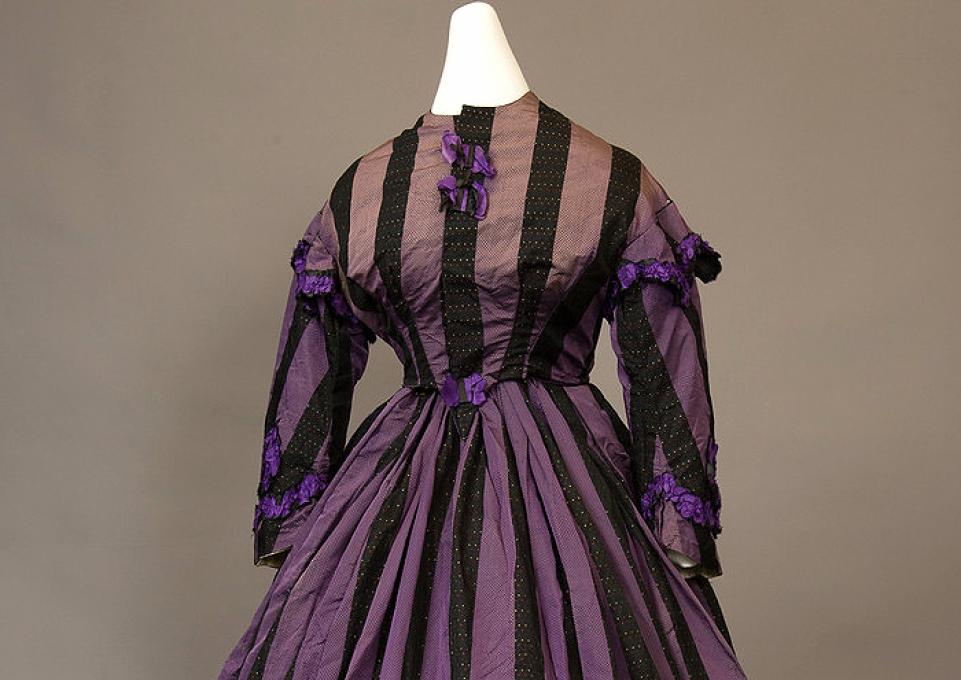
Students in Buffalo State’s Fashion and Textile Technology department often look ahead to forward-thinking styles, but they also have the opportunity to learn from designs of the past. Think tulle hats that once graced style-conscious women in the 1930s and 1940s, hand-painted linen skirts from the 1960s, and wedding gowns, undergarments and children’s clothing that harken back to the beginning of the 20th century.
All of these pieces are included among approximately 1,500 garments and accessories that comprise the department’s historic costume and textile collection, housed within a climate-controlled room on the third floor of the Technology Building.
“The purpose of the collection is to let students look at and handle clothes from generations past to get ideas of styles, fabrics, and cuts,” said Arlesa Shephard, assistant professor, who has served as the collection’s curator since joining the Buffalo State faculty in 2012.
Fashion and Textile Technology faculty began collecting clothing in the 1970s. When former faculty member Ellen DeWind joined Buffalo State in 1984, she further cultivated and expanded the collection as a way to educate budding fashion professionals. Through the years, donations from Buffalo State employees, local thrift shops, and historical societies, help the collection grow to what it is today.
While some college-level fashion programs have historic collections, they often can be viewed only in a gallery or by appointment while Buffalo State’s collection is dedicated to instruction, noted Lynn Boorady, Fashion and Textile Technology chair and associate professor.
“It is through this collection that we can enhance understanding of the technical aspects of construction, the aesthetics of the various time periods and the social meaning of apparel,” Boorady said. “This type of knowledge nurtures creativity and innovation and informs the professional practice of our students once they graduate.”
The majority of the clothes are women’s 20th-century apparel, though there is a smattering of men’s garments, as well as baby and children’s clothing dating as far back as the 1870s. A number of the pieces carry labels from iconic Buffalo stores of the past such as Adam Meldrum & Anderson (AM&A), and Tegler’s.
“I like the older pieces that don’t use the same techniques that we use today,” Shephard said. “I like to see how the pieces are put together and what makes them last as long as they have.”
The collection also includes a wide sampling of fabrics that students in textile courses can evaluate.
“It’s a unique resources with extensive information such as what years the fabric was used, what fibers went into it, and how much it cost per yard at the time,” said Shephard, who is now in the process of cataloging the collection digitally. She said she hopes to secure a grant to hire a graduate student to assist the immense digitalization process.
“The long-term goal is for the campus and the public to be able to access every piece online,” she said.
